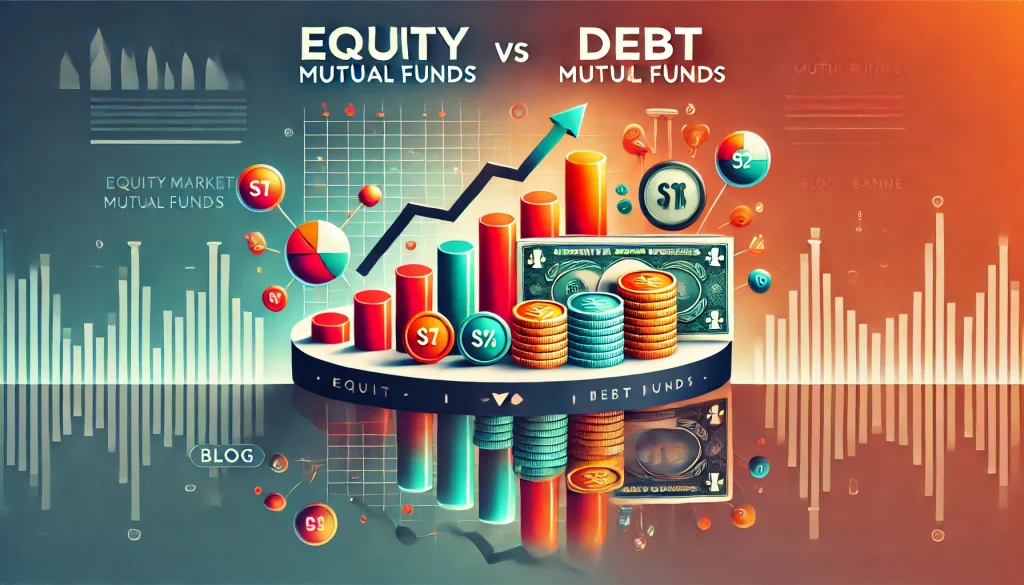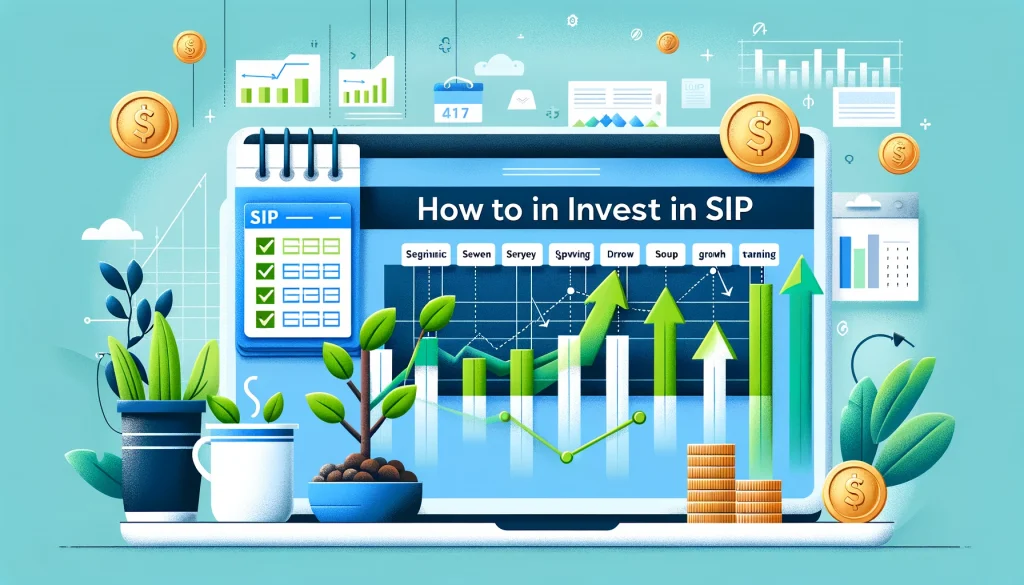
Investing in financial markets can be tedious, especially with the infinite investment options available today. One such option that has gained popularity among both beginner and seasoned investors is Exchange Traded Funds (ETFs). ETFs provide investors a unique combination of flexibility, diversification, and cost-effectiveness. In this blog, we will delve into the world of ETFs, exploring their benefits, types, considerations for selection, associated risks, tax implications, and tips for successful investing.
What are Exchange Traded Funds(ETFs)?
Exchange Traded Funds, are investment funds traded on stock exchanges, similar to individual stocks. ETFs, have recently gained significant popularity among investors. They are designed to track the performance of a specific index, commodity, sector, or asset class. Unlike mutual funds, which are priced at the end of each trading day, ETFs trade continuously throughout the trading hours, allowing investors to buy or sell shares at market prices.
ETFs offer investors an exposure to a diversified portfolio of assets within a single investment. By investing in an ETF, individuals gain indirect ownership of a basket of securities, such as stocks, bonds, or commodities, without having to purchase each security individually.
How Do ETFs Work?
Exchange-Traded Funds are structured as open-ended investment funds. They are created by an asset management company, often referred to as the ETF sponsor. The sponsor creates new shares of the ETF, offering them to authorised participants. These creation units can be bought or sold in the secondary market.
The price of an ETF is determined by the market demand and supply of its shares. If the demand for an ETF is high, its price may trade at a premium to the underlying net asset value (NAV). Conversely, if the demand is low, the ETF’s price may trade at a discount to the NAV. This feature allows investors to buy and sell ETFs throughout the trading day at market prices.
Advantages of Investing in Exchange-Traded Funds
ETFs offer several advantages to investors, making them a popular choice for both individual and institutional investors. Some key benefits include:
1. Diversification
Diversification is a key principle in investing, aimed at reducing risk by spreading investments across different asset classes. ETFs inherently provide diversification by holding a basket of securities. This diversification helps to mitigate the risk associated with investing in individual stocks or bonds, as losses from one security can be offset by gains from others within the ETF.
2. Liquidity & Flexibility
Exchange-Traded Funds provide investors with flexibility in terms of buying and selling shares. They can be bought or sold at any time during trading hours, allowing investors to react to market conditions swiftly. This liquidity is particularly advantageous for investors who value the ability to enter or exit positions quickly.
3. Transparency
ETFs offer transparency regarding their holdings, as the fund managers disclose the composition of the underlying portfolio regularly. Investors can easily access information about the securities held by the ETF, enabling them to make informed investment decisions.
4. Lower Costs
ETFs are known for their cost-effectiveness compared to other investment options. Their expense ratios are typically lower than those of mutual funds, primarily due to their passive investment approach. Since ETFs aim to replicate the performance of an underlying index rather than actively managed portfolios, they require less frequent trading, resulting in reduced transaction costs.
5. Tax Efficiency
ETFs are structured to minimise capital gains distributions, making them more tax-efficient than mutual funds. This tax advantage can enhance long-term returns for investors.
Different Types of Exchange-Traded Funds
Exchange Traded Funds are of various types, each designed to provide exposure to different asset classes and investment strategies. Here are some common types of ETFs:
1. Equity ETFs
Equity ETFs track a specific stock market index, such as the S&P 500 or the NASDAQ-100. They allow investors to invest in a broad range of stocks across various industries and sectors, providing diversification within the equity market.
2. Bond ETFs
Bond ETFs focus on fixed-income securities, including government, corporate, municipal, and Treasury bonds. They provide investors with access to the bond market, offering income generation and portfolio stability.
3. Commodity ETFs
Commodity ETFs track the performance of commodities such as gold, silver, oil, natural gas, or agricultural products. Investing in commodity ETFs allows investors to gain exposure to the price movements of these physical commodities without directly owning them.
4. Sector ETFs
Sector ETFs concentrate on specific sectors or industries, such as technology, healthcare, energy, or financial services. They enable investors to target particular market segments based on their investment strategies or thematic preferences.
5. International ETFs
International ETFs provide exposure to foreign markets outside of the investor’s home country. They allow investors to diversify globally and participate in the performance of international economies and markets.
6. Currency ETFs
Currency ETFs track the value of foreign currencies relative to a base currency, such as the U.S. dollar. These ETFs provide a way to speculate on or hedge against currency movements, particularly for investors with international exposure.
Risks Associated with Investing in ETFs
While Exchange-traded funds offer various advantages, they also carry certain risks that investors should be aware of:
1. Market Risk
ETFs are subject to market fluctuations and volatility. If the underlying securities in the ETF’s portfolio decline in value, the ETF’s price will also decrease.
2. Tracking Error Risk
Although ETFs aim to replicate the performance of an index, tracking errors can occur. Factors such as fees, expenses, and sampling techniques can contribute to deviations from the index’s returns.
3. Liquidity Risk
While ETFs generally offer liquidity, there are certain Exchange-traded funds with low trading volumes or lacking market participants may face challenges when buying or selling shares, leading to wider bid-ask spreads.
4. Concentration Risk
Some ETFs focus on specific sectors, industries, or regions. Investing heavily in a particular sector or region exposes investors to concentration risk, as the performance of the ETF becomes heavily dependent on that specific market.
5. Closure Risk
In rare cases, ETF sponsors may decide to close an ETF if it fails to attract sufficient assets or trading volume. In such instances, investors may need to sell their shares or receive cash based on the ETF’s net asset value.
Understanding these risks is crucial before investing in ETFs. Diversifying your investments and consulting with a financial advisor to determine the suitability of ETFs for your portfolio are recommended.
Tax Implication for ETF Investors
Understanding the tax implications of investing in ETFs is crucial for maximizing returns and managing tax obligations:
1. Capital Gains Distributions
Exchange-traded funds, like mutual funds, may distribute capital gains to investors. These distributions can result in taxable events for investors, even if they haven’t sold their ETF shares. It’s important to be aware of the potential tax consequences associated with capital gains distributions.
2. Tax Efficiency
Compared to mutual funds, ETFs tend to be more tax-efficient due to their unique structure. The creation and redemption process of ETF shares in-kind can help minimize capital gains distributions, reducing the tax burden for investors.
3. In-Kind Creation and Redemption
ETFs utilize an in-kind creation and redemption process, allowing authorized participants to exchange baskets of securities for ETF shares. This mechanism helps reduce potential taxable events that could arise from buying or selling securities within the ETF.
How to Choose the Right ETF for Your Investment Goals?
Selecting the right ETF requires careful consideration of your investment goals, risk tolerance, and time horizon. Here are some factors to consider when choosing an ETF:
1. Investment Objective
Identify your investment objective and the asset class or market segment you want to target. Whether it’s broad market exposure or a specific sector, ETFs are available to align with your investment goals.
2. Index Selection
Evaluate the index that the ETF aims to replicate. Understand the methodology and composition of the index to ensure it aligns with your investment strategy and preferences.
3. Expense Ratio
Consider the expense ratio of the ETF, as lower costs can positively impact your long-term returns. Compare expense ratios across similar ETFs to find the most cost-effective option.
4. Tracking Error
Assess the ETF’s historical tracking error to understand how closely it has tracked its underlying benchmark. Lower tracking error indicates better replication.
5. Fund Size and Liquidity
Review the size of the ETF and its trading volume to ensure it has sufficient assets and liquidity. Larger funds with higher trading volumes generally provide better marketability.
6. Historical Performance
Analyse the ETF’s historical performance over different time periods to gain insights into its track record. Compare its performance against the benchmark and peer group.
7. Fund Provider
Consider the reputation and expertise of the ETF provider. Established providers with a track record of managing successful ETFs can offer a sense of confidence and reliability.
By considering these factors and conducting thorough research, you can make informed decisions when selecting Exchange-traded funds that align with your investment objectives.
Popular ETF Providers in the Market
The ETF market has witnessed significant growth, and numerous providers offer a wide range of ETFs to choose from. Some popular ETF providers include:
- BlackRock iShares
- Vanguard
- State Street Global Advisors (SPDRs)
- Invesco
- Charles Schwab
- WisdomTree
- Fidelity Investments
- VanEck
- Global X
These providers offer diverse Exchange-traded funds covering various asset classes and investment strategies. Investors should research and compare offerings from different providers to find the most suitable ETFs for their portfolios.
Conclusion
Exchange-traded funds have revolutionised the investment landscape, providing investors with a convenient and cost-effective way to access a wide range of asset classes and investment strategies. ETFs offer diversification, transparency, liquidity, and tax efficiency, making them a popular choice among both individual and institutional investors.
By understanding ETFs’ structure, types, benefits, and risks, any investors can make informed decisions and incorporate Exchange-traded funds into their investment portfolios. It’s important to conduct thorough research, evaluate performance metrics, and consider personal investment goals when selecting the right ETFs for long-term wealth accumulation.
FAQs
Yes, ETFs can be a good investment option for many investors. They provide diversification, cost-efficiency, and flexibility in terms of asset classes and investment strategies. However, it’s important to carefully evaluate each ETF and consider your own investment goals and risk tolerance.
Yes, ETFs can be suitable for long-term investing. They offer exposure to a diversified portfolio of securities and can be held for an extended period. However, choosing ETFs aligned with your long-term investment goals and regularly reviewing their performance is essential.
Yes, to invest in Exchange Traded Funds, you must need a brokerage account. Brokerage firms provide access to a wide range of ETFs and facilitate the buying and selling of shares on stock exchanges
Yes, investing in ETFs carries risks, and there is a possibility of losing money. ETFs are subject to market fluctuations and volatility, and the value of the ETF can go down based on the performance of the underlying securities.
ETF shares can be bought or sold on stock exchanges throughout the trading day, similar to individual stocks. Investors can execute trades at market prices whenever the market is open.
Disclaimer
This article is solely for educational purposes. Stable Money doesn't take any responsibility for the information or claims made in the blog.


